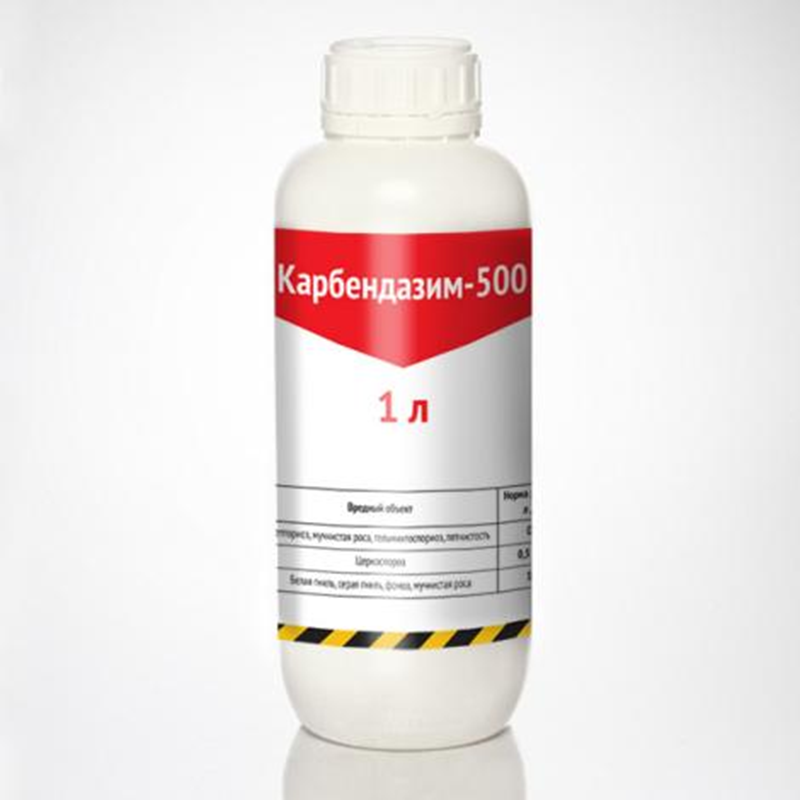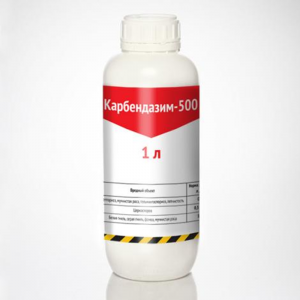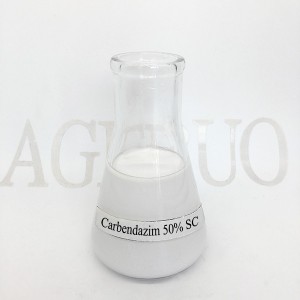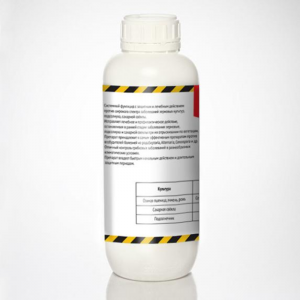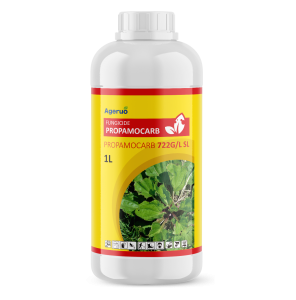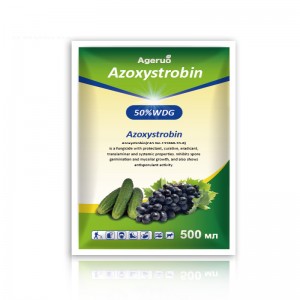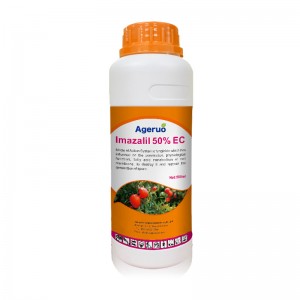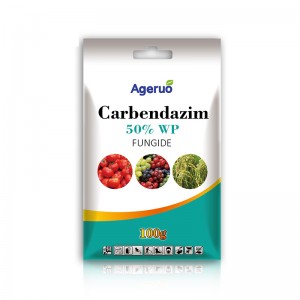Products
POMAIS Fungicide Carbendazim 50% SC | Control The Rice Sheath Blight Organic Pesticide
Introduction
Carbendazim 50% SC (Suspension Concentrate) is a widely used systemic fungicide belonging to the benzimidazole group. It is primarily utilized in agriculture to control a broad spectrum of fungal diseases affecting crops. The active ingredient, carbendazim, disrupts the development of fungal cell walls, preventing the spread of infection.
The Carbendazim 50% SC plays a crucial role in ensuring crop health and productivity by protecting against diseases that can devastate yields. The Carbendazim fungicide is particularly valued for its effectiveness, broad-spectrum activity, and relatively low toxicity to non-target organisms.
| Active Ingredient | Carbendazim |
| Name | Carbendazole 50% SC, Carbendazim 500g/L SC |
| CAS Number | 10605-21-7 |
| Molecular Formula | C9H9N3O2 Type |
| Application | fungicides |
| Brand Name | POMAIS |
| Shelf life | 2 Years |
| Purity | Carbendazim 500g/L SC |
| State | Liquid |
| Label | Customized |
| Formulations | 50% SC; 50%WP; 98%TC |
| The mixed formulation product | Carbendazim 64% + Tebuconazole 16% WP Carbendazim 25% + Flusilazole 12% WP Carbendazim 25% + Prothioconazole 3% SC Carbendazim 5% + Mothalonil 20% WP Carbendazim 36% + Pyraclostrobin 6% SC Carbendazim 30% + Exaconazole 10% SC Carbendazim 30% + Difenoconazole 10% SC |
Package
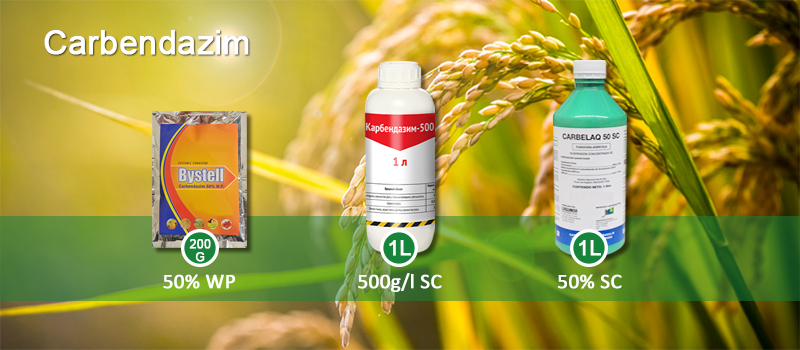
Mode of Action
The fungicide is used to control plant diseases in many crops and fruits. Carbendazim is Systemic fungicide with protective and curative action. Absorbed through the roots and green tissues, with translocation acropetally. Thiram is Basic contact fungicide with protective action.
Suitable Crops:
Carbendazim is used to control fungal diseases in a wide range of crops, including: Grains such as wheat, barley, and oats, Fruits such as apples, grapes, and citrus fruits, Vegetables such as tomatoes, potatoes, and cucurbits (e.g., cucumbers, melons), Ornamental plants, Turfgrass, Various field crops like soybeans, corn, and cotton.

Act on these Fungal Disease:
Carbendazim is highly effective against a wide range of fungal diseases, including but not limited to: Powdery mildew, Leaf spot, Anthracnose, Fusarium wilt, Botrytis blight, Rust, Verticillium wilt, Rhizoctonia blight.

Common Symptoms
Leaf Spots: Dark, necrotic spots on leaves, often surrounded by a yellow halo.
Blights: Rapid and extensive necrosis leading to the death of plant parts.
Mildews: Powdery or downy white, gray, or purple fungal growth on leaves and stems.
Rusts: Orange, yellow, or brown pustules on leaves and stems.
Uncommon Symptoms
Wilt: Sudden wilting and death of plants despite adequate water supply.
Galls: Abnormal outgrowths on leaves, stems, or roots caused by fungal infection.
Cankers: Sunken, necrotic areas on stems or branches that can girdle and kill the plant.
Using Method
| Crop | Fungal diseases | Dosage | Usage method |
| Wheat | Scab | 1800-2250 (g/ha) | Spray |
| Rice | Sharp Eyespot | 1500-2100 (g/ha) | Spray |
| Apple | Ring rot | 600-700 times liquid | Spray |
| Peanut | Leaf spot | 800-1000 times liquid | Spray |
Application Methods
Foliar Spray
Carbendazim 50% SC is commonly applied as a foliar spray, where it is mixed with water and sprayed directly onto the foliage of plants. Proper coverage is essential to ensure effective control of fungal diseases.
Seed Treatment
Seeds can be treated with Carbendazim suspension to protect seedlings from soil-borne fungal pathogens. The suspension is typically applied as a coating to the seeds before planting.
Soil Drench
For soil-borne diseases, Carbendazim suspension can be applied directly to the soil around the base of plants. This method allows the active ingredient to penetrate the soil and protect plant roots from fungal infections.
Packing
We’re able to provide customized package.
Packing Diversity
COEX, PE, PET, HDPE, Aluminum Bottle, Can, Plastic Drum, Galvanized Drum, PVF Drum, Steel-plastic Composite drum, Aluminum Foll Bag, PP Bag and Fiber Drum.
Packing Volume
Liquid: 200Lt plastic or iron drum, 20L, 10L, 5L HDPE, FHDPE, Co-EX, PET drum; 1Lt, 500mL, 200mL, 100mL, 50mL HDPE, FHDPE, Co-EX, PET bottle Shrink film, measuring cap;
Solid: 25kg, 20kg, 10kg, 5kg fiber drum, PP bag, craft paper bag,1kg, 500g, 200g, 100g, 50g, 20g Aluminum foil bag;
Carton: plastic wrapped carton.
FAQ
What is carbendazim?
Carbendazim is a broad-spectrum fungicide used to control various fungal diseases in crops and plants.
What is carbendazim used for?
Carbendazim is used to control fungal diseases in crops and plants.
Where to buy carbendazim?
We are a global supplier of carbendazim, offering small quantity orders and actively seeking distributors worldwide. We provide customization services for packaging and formulations, and demonstrate sincerity with competitive pricing.
Can carbendazim be combined with dimethoate?
Yes, carbendazim and dimethoate can be combined for certain applications, but always follow label instructions and compatibility tests.
Can carbendazim be autoclaved?
No, autoclaving carbendazim is not recommended as it may degrade the chemical.
Can carbendazim be used for powdery mildew?
Yes, carbendazim can be effective against powdery mildew.
Does carbendazim kill mycorrhiza?
Carbendazim can have adverse effects on beneficial soil organisms like mycorrhiza.
How much carbendazim should be used on plants?
The amount of carbendazim to use depends on the specific product and target plant. Detailed dosage information can be discussed with us!
How to dissolve carbendazim?
Pour the appropriate amount of carbendazim into water and stir until dissolved.
How to use carbendazim?
Mix carbendazim with a certain ratio of water, then spray onto plants to treat fungal diseases.
Is carbendazim banned in India?
Yes, carbendazim is banned in India due to concerns about its potential health and environmental impacts.
Is carbendazim banned in the UK?
No, carbendazim is not banned in the UK, but its use is regulated.
Is carbendazim systemic?
Yes, carbendazim is systemic, meaning it is absorbed and distributed throughout the plant.
What treatments contain benomyl or carbendazim?
Some fungicide treatments may contain either benomyl or carbendazim, depending on the formulation and brand.
What types of fungi does carbendazim kill?
Carbendazim is effective against a wide range of fungi, including powdery mildew, leaf spot, and other plant diseases.
How do you guarantee the quality?
From the beginning of the raw materials to the final inspection before the products are delivered to the customers, each process has undergone strict screening and quality control.
What's the delivery time?
Usually we can finish the delivery 25-30 work days after contract.

